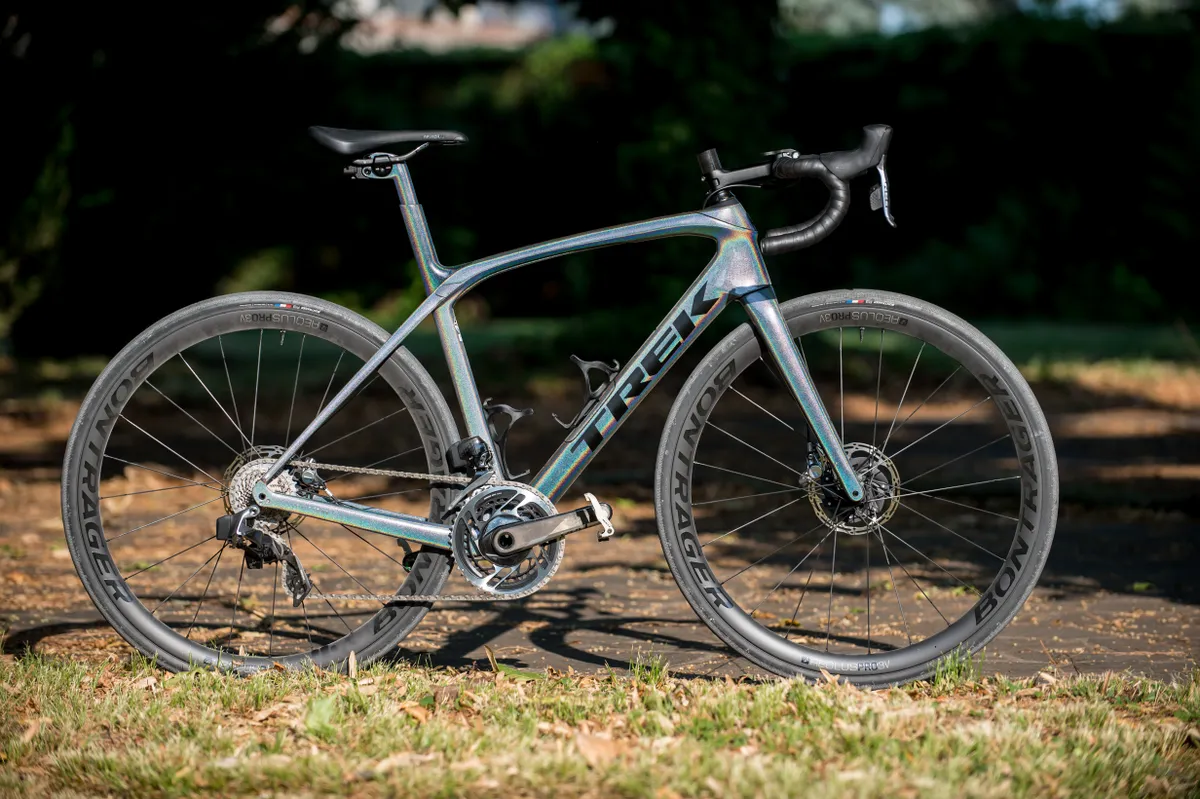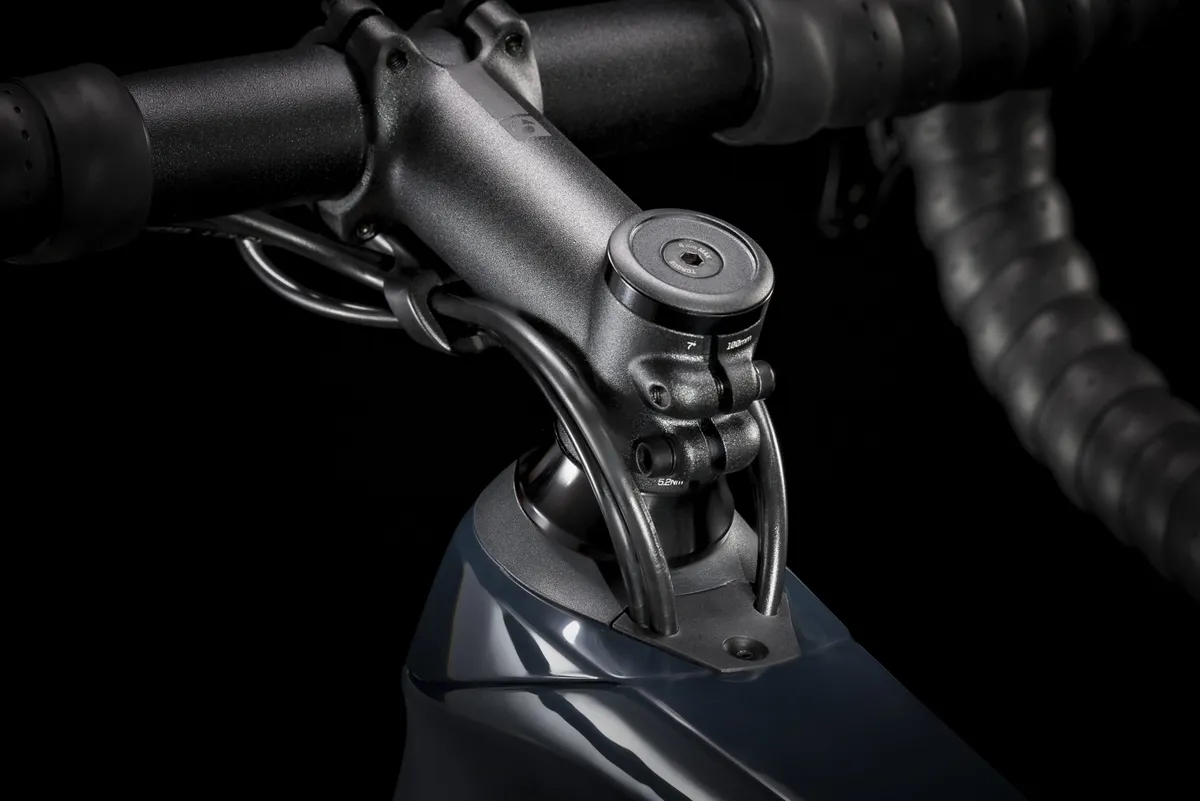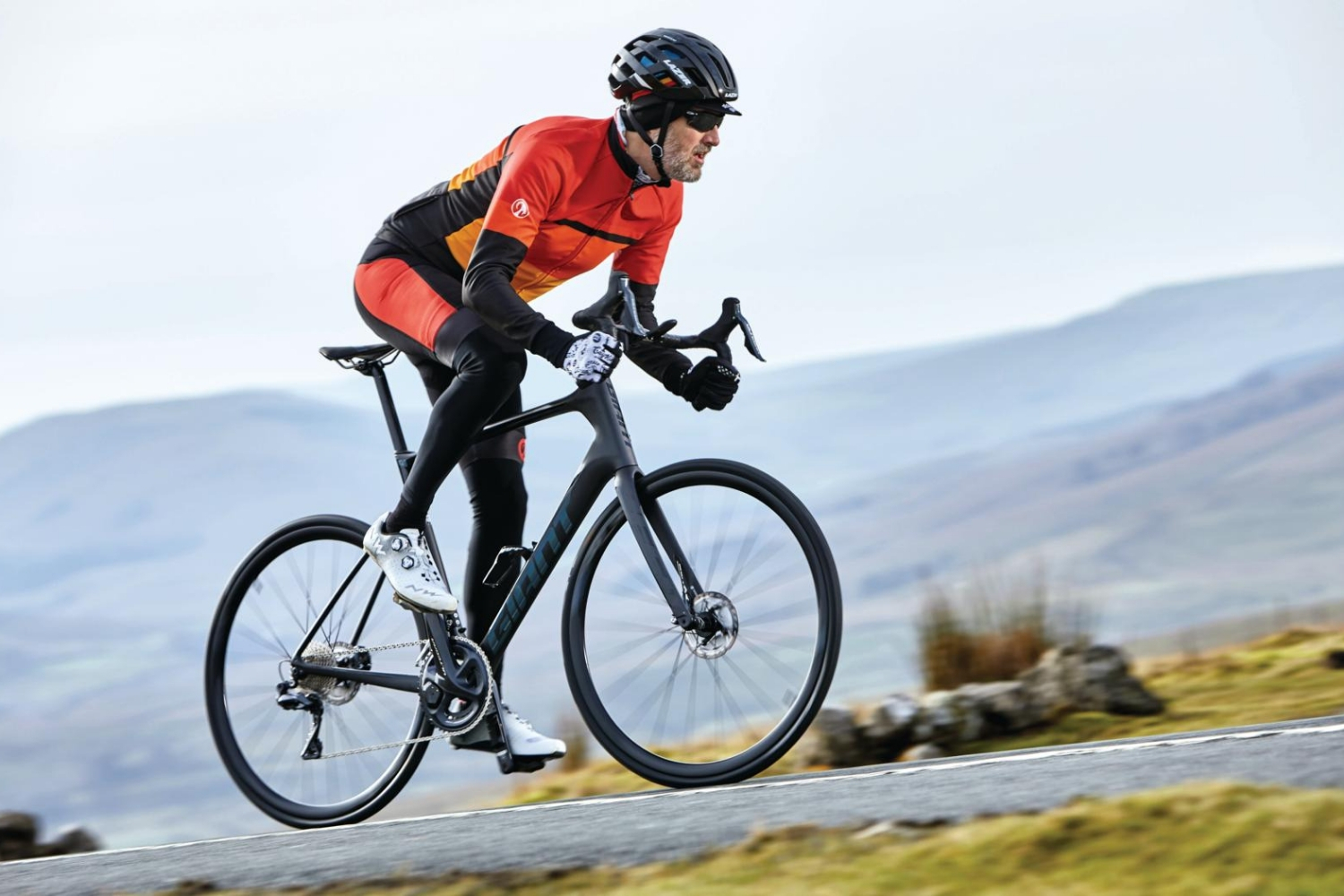The third generation of the Trek Domane carries the revised rear IsoSpeed layout first seen on the new Madone, has massively increased tyre clearances, features neat integrated storage, and has a host of aero-improvements that make it a true — and truly comfortable — super bike.
- The 2020 Trek Domane gets more aero, more adjustable and goes disc-only
- Trek’s cheapest ever Madone is here
- Best road bikes 2019: how to choose the right one for you
2020 Trek Domane SLR9.9 Project One key specs

- Updated frameset with top-tube mounted IsoSpeed system
- Semi-internal cable routing
- SRAM Red eTap AXS groupset
- Bontrager Aeolus XXX 4 wheelset
- Bontrager R3 28mm tyres
- Project One bikes start at £9,650 / €10,500
More comfortable, more aero, more faster-er
The headline figures for the new Trek Domane SLR are impressive — Trek claims the bike is up to 27 per cent more compliant than the previous flagship Domane, “one minute per hour faster” than the last model and the top-end Project One version we were given to test around the roads of Padova, Italy, has a £9,650 / €10,500 ($ N/A) price tag.
I’m not expecting you to feel sorry for me but that last figure is actually one of the problems with bike launches — we get to ride the toppest of top-spec machines and, with few exceptions, they’re always impressive. And Trek will be pleased to hear that their flagship Domane Mk. III is impressive.
I’m going to start with the faster claim. While not an overtly aero bike in the same vein as the Madone, Trek has generally cleaned up the Domane to make it more slippery.
There’s nothing instantly obvious — no Kammtail seat tube, air-slicing fork designs or minuscule clearances between tyre and frame. Cables, however, are now almost entirely internal which will go some way to reducing drag.

Almost entirely internal? Trek has opted to only internalise the cables from the top tube back, which is something that I’m happy to support. Should you want to swap your bars or, you know, travel with your bike, there’s no battling with a complicated, proprietary internally-cabled stem and bar system.
Is this setup faster than the last Domane? Well, the external ‘cabling’ on this rider surely negated any aero gains from the bike but, I was lucky enough to ride last year’s Madone SLR at its launch and that, genuinely, felt like a rocket ship. Even when I was feeling rinsed, I’d look down at my Wahoo and be amazed at the speeds I was sustaining.
The Domane didn’t quite perform such miracles and doesn’t have the same accelerative oomph as the Madone but, honestly, it feels fast enough, not least for an endurance bike.
Our test model was rolling on Bontrager’s excellent Aeolus XXX 4 47mm-deep aero wheels — these are stiff, stable and quick and complement the frame well.
We’re used to bike brands telling us how their latest and greatest bikes are lighter than ever before but the new Domane has put on around 200g over the previous iteration, but then the same — at the very least — can probably be said for me compared to when I rode that Madone.
I can’t say that the Domane felt like a slouch on the climbs — I did and our Italian ride guide Allesandro will vouch for that — but it isn’t necessarily designed to be a KOM-killer in the same vein as the Emonda. You’ll have to wait for the climbing verdict of someone far skinnier for a definitive view of the Domane’s ascending attributes.

Tyre-wise, you can fit rubber up to 38mm-wide on the new Domane with 4mm of clearance on either side, and all bikes below the 9.9 we were riding will ship with new 32mm tyres.
It’s de-rigueur to point a comfort bike at potholes and the Domane, with its front and rear IsoSpeed, does a truly excellent job at soaking up all but the biggest hits
These, claim Trek, roll faster than narrower tyres in almost all conditions and help contribute to the Domane being their most versatile road bike ever. Could the Domane be a road and gravel machine rolled into one? Certainly, the journalists who took the Domane on a hard, fast and technical gravel ride seemed impressed.
For the road ride, we were running standard 28mm rubber and this was in no way detrimental to the Domane’s main selling point — its comfort.
Okay, the Italian roads we were riding were, on the whole, pretty good but there were still opportunities to test the bike’s compliance. It’s de-rigueur to point a comfort bike at potholes and the Domane, with its front and rear IsoSpeed, does a truly excellent job at soaking up all but the biggest hits.
The star of the Domane’s cushioning show is the adjustable toptube IsoSpeed damper... you can tune your Domane from racy stiff to smooth operator in just a couple of minutes
When we did encounter a rutted, broken asphalt descent the Domane handled it with aplomb — the compliance encourages you to descend faster and brake later than you might on a more rigid machine.
The star of the Domane’s cushioning show is the adjustable toptube IsoSpeed damper, which debuted on the Madone in 2018. Undo a couple of allen bolts below the top tube and a slider is revealed — move it forwards and you add more flex, backwards and the bike stiffens up.
As with the Madone, this really does work and there’s a tangible difference, meaning you can tune your Domane from racy stiff to smooth operator in just a couple of minutes. It’s worth mentioning that the top tube-mounted IsoSpeed system is only available on SLR models, although the SL’s will inherit the tuneable seatpost IsoSpeed currently found on the outgoing range toppers.
The front end IsoSpeed isn’t tuneable but does a good job of isolating shocks through the bars and the bars themselves are carbon IsoCore models. These have a layer of elastomer within the carbon which Trek says adds another 20 per cent of cushioning to the front end.
Elsewhere, our test build was decked out with SRAM’s Red eTap AXS 12-speed groupset. We love it, simple as that and, of course, the fancy Project One pearlescent paint is always a hit with any MAMIL who once lusted after a TVR Chimera.
2020 Trek Domane Mk. III early impressions
Obviously, we want to spend a lot more time on the new Domane and will be getting our hands on one back in the UK soon but first impressions are good.
It’s an excellent bike that does a very good job of catering for both fans of speed and connoisseurs of comfort. Of course, we’re also keen to test the more affordable — though the base Tiagra-equipped model comes in at a pricey $2,499 / €2,299 / £2,100 — 2020 Domane SL models as these are likely going to be more relevant to more riders. Watch this space.
